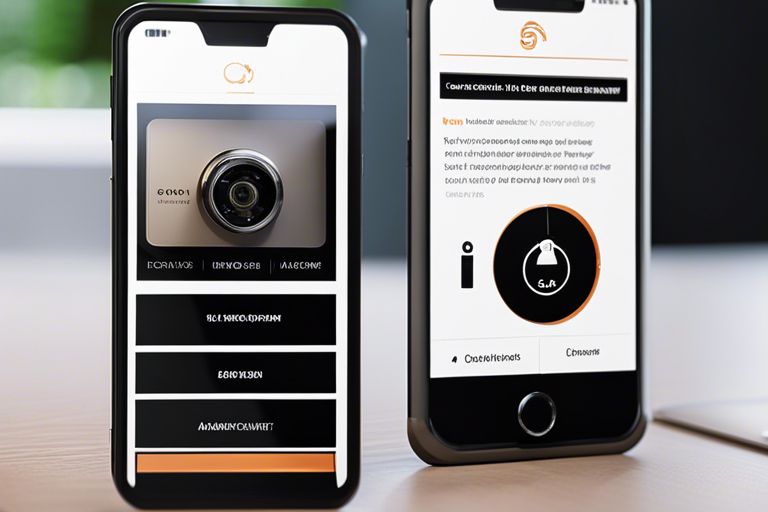Ensuring the security of your small business is paramount in today’s digital age where cyber threats loom large. Crafting a robust security plan is not only necessary but also achievable with the right knowledge and approach. In this guide, we will walk you through the necessary steps to create a comprehensive security plan tailored to the specific needs of your small business. From identifying potential vulnerabilities to implementing protective measures, this article will equip you with the tools and know-how to safeguard your business assets and data effectively. Take charge of your small business’s security today with our expert tips.
Key Takeaways:
- Identify Assets: Begin by identifying all the assets your small business needs to protect, such as digital data, physical equipment, and intellectual property.
- Assess Risks: Conduct a thorough risk assessment to understand potential threats and vulnerabilities that could compromise your business’s security.
- Develop Policies and Procedures: Create specific security policies and procedures that outline how your business will address security incidents and safeguard its assets.
- Implement Security Measures: Invest in security measures like firewalls, antivirus software, data encryption, and access controls to enhance your business’s security posture.
- Provide Training and Awareness: Educate your employees on security best practices, conduct regular training sessions, and promote a culture of security awareness throughout your organisation.
Understanding Your Security Needs
Assessing Potential Risks and Threats
Before implementing a security plan for your small business, it is crucial to assess the potential risks and threats that your company may face. These could range from physical security breaches to cyber-attacks, employee theft, or natural disasters. By conducting a thorough risk assessment, you can identify areas of vulnerability and develop strategies to mitigate these risks effectively.
Identifying Critical Assets and Information
Another necessary step in creating a security plan is to identify the critical assets and information within your business. This includes sensitive data, intellectual property, financial records, and any other information that is vital to your operations. By determining what assets are most valuable to your business, you can prioritise their protection and implement security measures accordingly.
It is important to involve key stakeholders from different departments in this process to ensure that all critical assets and information are accurately identified. Additionally, regularly reviewing and updating this list will help you adapt your security plan to evolving threats and changes within your business.
Developing Your Security Plan
Establishing Security Policies and Procedures
When developing a security plan for your small business, it is crucial to start by establishing clear security policies and procedures. These documents will outline guidelines and rules that employees must follow to ensure the security of sensitive data and company assets. By defining protocols for data handling, access control, and incident response, you can create a culture of security within your organisation.
Choosing the Right Security Technologies and Controls
Choosing the right security technologies and controls is important for protecting your small business from cyber threats. Conduct a thorough risk assessment to identify potential vulnerabilities and determine the appropriate security solutions. Invest in technologies such as firewalls, antivirus software, encryption tools, and secure authentication mechanisms to safeguard your digital assets. Additionally, consider implementing security controls like access control lists, intrusion detection systems, and regular security audits to strengthen your defences against cyber-attacks.
Implementing Your Security Plan
Employee Training and Awareness Tips
When implementing your security plan for small businesses, it is crucial to focus on employee training and awareness. Provide regular training sessions to educate your staff on security best practices and potential threats. Encourage employees to be vigilant and report any suspicious activities promptly. Ensure that all employees understand the importance of following security protocols and keeping sensitive information secure.
- Regularly update employees on the latest security threats and measures to combat them.
- Conduct phishing simulations to test employees’ awareness and response to fraudulent attempts.
- Encourage the use of strong passwords and two-factor authentication for accessing company systems.
This will help create a culture of security within your organisation and reduce the risk of security breaches due to human error.
Incident Response and Recovery Strategies
Having robust incident response and recovery strategies in place is important for small businesses to effectively deal with security incidents. Develop a clear plan outlining the steps to be taken in the event of a security breach, including who to contact, how to contain the incident, and how to minimise the impact on the business. Regularly test your incident response plan to ensure that it is up to date and effective in addressing various security scenarios.
This proactive approach will enable your business to respond swiftly and decisively in the face of a security incident, limiting the damage and facilitating a faster recovery process.
Maintaining and Updating Your Security Plan
Regular Reviews and Audits
Regular reviews and audits are crucial in ensuring that your security plan stays effective and up-to-date. By conducting periodic assessments of your security measures, you can identify any weaknesses or vulnerabilities that need to be addressed. This proactive approach will help you stay one step ahead of potential security threats and protect your small business from cyber attacks.
Adapting to New Security Challenges and Trends
Adapting to new security challenges and trends is important for the long-term success of your security plan. As technology advances and cyber threats evolve, it is important to stay informed about the latest security risks and best practices. By staying proactive and flexible, you can adjust your security plan to effectively mitigate new threats and protect your small business from potential vulnerabilities.
Creating a Security Plan for Small Businesses
Developing a comprehensive security plan for small businesses is crucial in safeguarding sensitive data and assets. By identifying potential risks, implementing access controls, regularly updating software, and educating employees on cybersecurity best practices, businesses can significantly reduce the likelihood of security breaches. It is necessary to conduct regular risk assessments, establish incident response procedures, and invest in reliable security solutions to protect against evolving threats. Prioritising cybersecurity not only boosts data protection but also enhances trust with customers and partners. By following these steps and continually refining the security plan, small businesses can fortify their defences and mitigate risks effectively.
FAQ
Q: Why is it important for small businesses to create a security plan?
A: It is crucial for small businesses to create a security plan to safeguard sensitive data, protect against cyber threats, comply with regulations, and build trust with customers.
Q: What should be included in a security plan for small businesses?
A: A security plan for small businesses should include risk assessment, access control measures, employee training, data encryption, incident response procedures, and regular security audits.
Q: How can small businesses assess their security risks?
A: Small businesses can assess their security risks by identifying potential threats, evaluating vulnerabilities, analysing the impact of security breaches, and prioritising areas for improvement.
Q: What are the common cyber threats faced by small businesses?
A: Common cyber threats faced by small businesses include phishing attacks, ransomware, malware infections, social engineering, insider threats, and denial of service (DoS) attacks.
Q: How often should a security plan be reviewed and updated for small businesses?
A: A security plan for small businesses should be reviewed and updated regularly, at least annually, or whenever there are significant changes in the business operations, technology infrastructure, or threat landscape.






